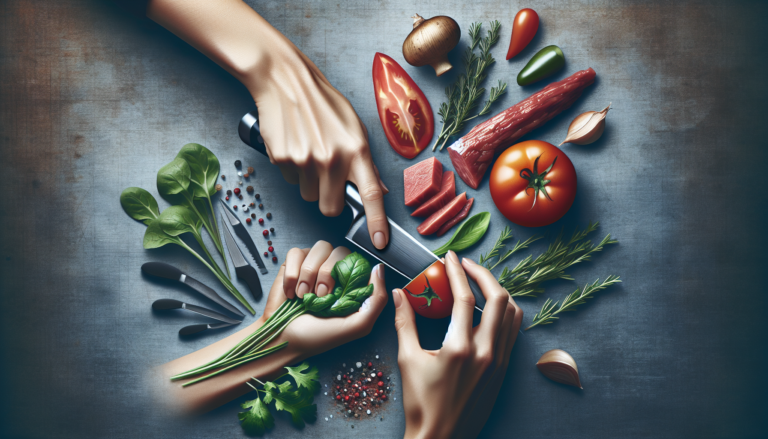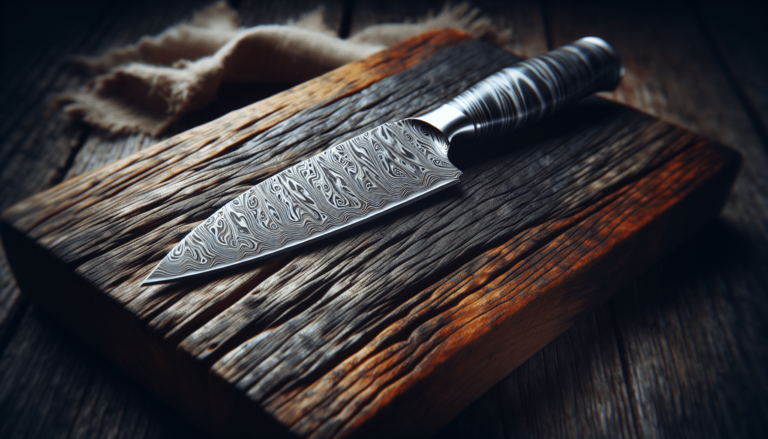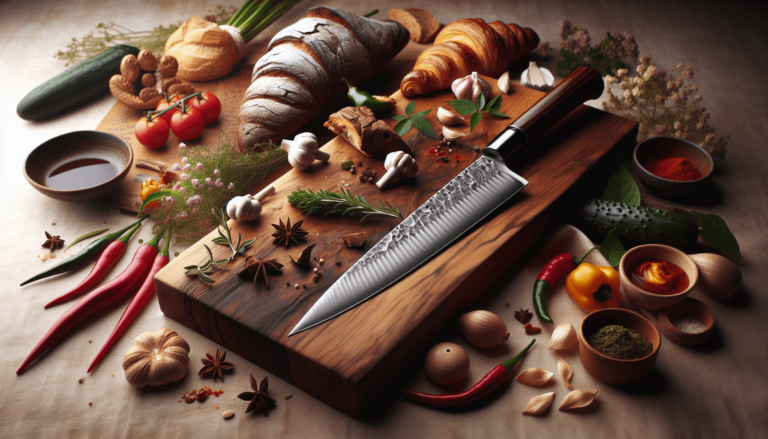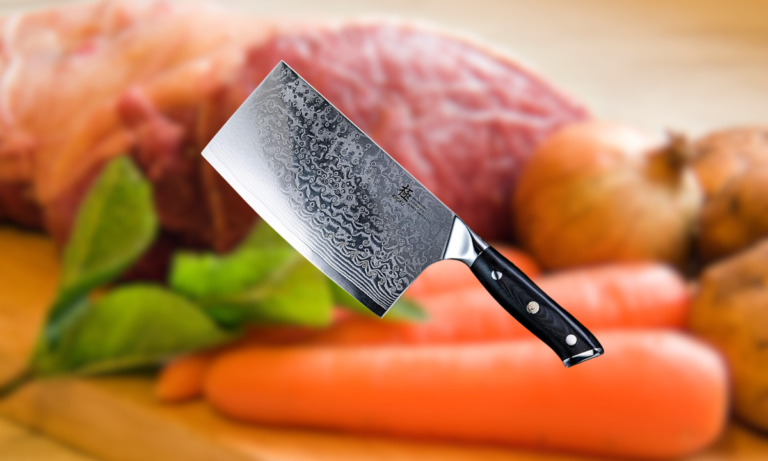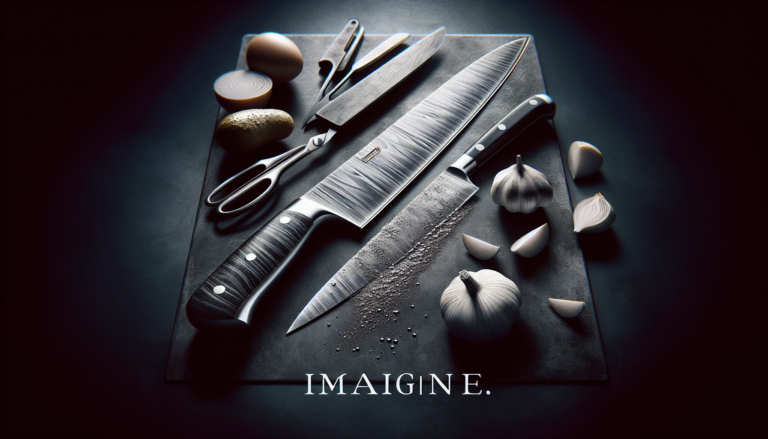Understanding the Chinese Cleaver: A Versatile Kitchen Knife
If you’ve ever stepped foot in a Chinese kitchen, you’re sure to have noticed the unmistakable presence of the Chinese cleaver. This versatile kitchen knife, known for its broad blade and weighty heft, is a staple tool in Chinese cooking.
But what exactly is a Chinese cleaver and how does it differ from other knives? In this article, we’ll unravel the mysteries of the Chinese cleaver and explore its many uses in the culinary world.
Whether you’re an amateur chef looking to expand your kitchen arsenal or simply intrigued by the world of cutlery, join us as we delve into the fascinating world of the Chinese cleaver.
What is a Chinese cleaver?
A Chinese cleaver, also known as a Chinese chef’s knife or a Chinese vegetable knife, is a versatile kitchen tool that has been an integral part of Chinese cooking for centuries. It is characterized by its rectangular shape and wide, flat blade, which is unlike the curved blade of a Western chef’s knife.
History of the Chinese cleaver
Early origins
The history of the Chinese cleaver dates back thousands of years, with its origins believed to be in ancient China. In the early days, it was primarily used as a multi-purpose tool for chopping, slicing, and mincing ingredients. Its design evolved over time to fit the needs of Chinese cooks, who often cooked large meals with a wide variety of ingredients.
Evolution and development
As Chinese cuisine developed and became more diverse, so did the Chinese cleaver. The design of the cleaver was refined, and different versions were created to specialize in various tasks. For example, bone cleavers were developed specifically for cutting through bones, while noodle cleavers were designed to slice thin, delicate noodles.
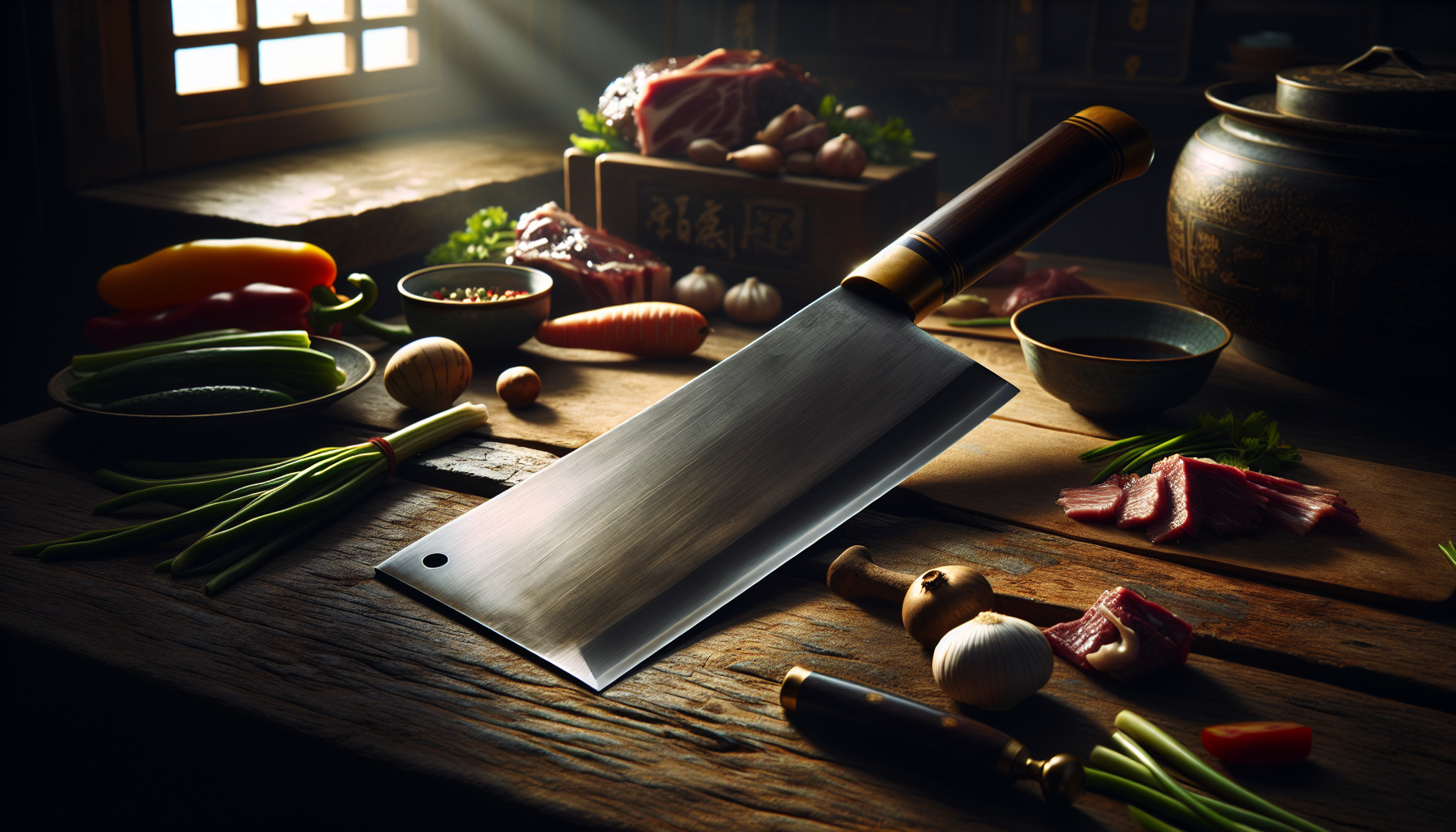
Types of Chinese cleavers
Traditional cleavers
Traditional cleavers are the most commonly used type of Chinese cleaver. They have a wide, rectangular blade with a flat profile, making them perfect for chopping, mincing, and slicing a wide range of ingredients. These cleavers typically have a sharp edge and a sturdy spine, allowing for efficient cutting and meat preparation.
Bone cleavers
Bone cleavers, as the name suggests, are designed specifically for cutting through bones. They have a thick, heavy blade that can withstand the impact of cutting through tough bones without chipping or breaking. Bone cleavers are often used in Chinese cuisine to prepare dishes that require bone-in meat or poultry.
Noodle cleavers
Noodle cleavers have a thin, flexible blade that is perfect for slicing thin noodles. The delicate nature of noodles requires a precise cutting tool that can effortlessly create thin, even slices. Noodle cleavers are widely used in Chinese kitchens to prepare various types of noodles, such as lo mein, chow mein, and rice noodles.
Vegetable cleavers
Vegetable cleavers, also known as vegetable knives, are specifically designed for slicing and chopping vegetables. They have a thin, wide blade that allows for precise and efficient cutting, making them a popular choice among Chinese cooks for vegetable preparation. Vegetable cleavers are incredibly versatile and can handle a wide range of vegetables, from leafy greens to root vegetables.
Meat cleavers
Meat cleavers, as the name suggests, are designed for cutting and preparing meat. They have a thick, heavy blade that can easily break through bones and separate meat from the bone. Meat cleavers are commonly used in Chinese cooking for preparing dishes such as Peking duck and braised pork belly.
Design and construction
Blade
The blade of a Chinese cleaver is typically made of high-quality stainless steel or carbon steel. Stainless steel blades are easy to care for and resist rust, while carbon steel blades offer superior sharpness and edge retention. The shape of the blade is wide and rectangular, allowing for maximum surface area and efficient cutting. The sharpness of the blade is crucial for precise cutting, and many Chinese cleavers feature a thin, finely honed edge.
Handle
The handle of a Chinese cleaver is often made of wood, plastic, or composite materials. Wood handles are preferred by some cooks for their traditional and natural feel, while plastic and composite handles offer durability and easy maintenance. The handle is usually wide and provides a comfortable grip for extended use. Some Chinese cleavers have a full tang construction, meaning the blade extends all the way through the handle, providing extra stability and balance.
Weight and balance
Chinese cleavers generally have a heavier weight compared to Western chef’s knives. This weight is advantageous for chopping and slicing tasks, as it provides momentum and power to the cutting motion. Despite their weight, Chinese cleavers are carefully balanced to ensure excellent control and maneuverability. The balance point is typically located at the midpoint of the blade, allowing for precise cutting and reduced hand fatigue.
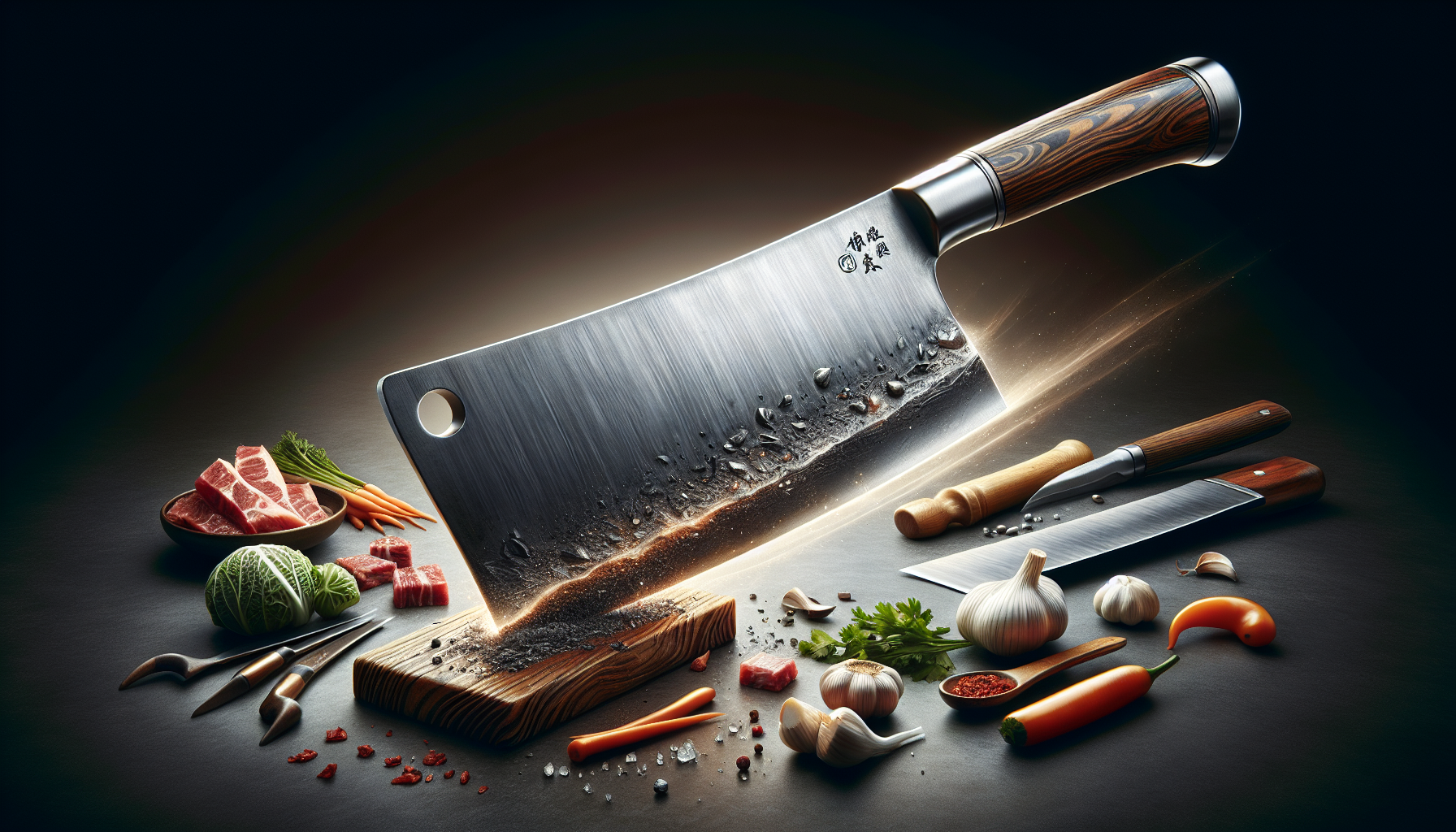
Versatility in the kitchen
One of the key features of the Chinese cleaver is its versatility in the kitchen. Its wide, flat blade and sturdy construction make it suitable for a wide variety of tasks. Whether you need to chop vegetables, slice meat, or mince garlic, the Chinese cleaver is up to the challenge. Its large surface area allows for efficient cutting and chopping, making it a versatile tool for both professional chefs and home cooks.
Chinese cleaver vs. Western chef’s knife
While the Chinese cleaver and the Western chef’s knife may appear similar at first glance, they have distinct differences that set them apart. The Chinese cleaver has a wider, flatter blade, while the Western chef’s knife has a more curved blade. The Chinese cleaver is primarily used for chopping and slicing, while the Western chef’s knife is designed for a wider range of tasks, including slicing, dicing, and delicate precision work.
Common uses of the Chinese cleaver
The Chinese cleaver is used in a variety of cooking techniques and dishes. It is commonly used to chop vegetables, such as onions, carrots, and peppers, as well as to slice meat and poultry. The flat blade of the cleaver is also ideal for smashing garlic cloves and ginger, releasing their flavors more effectively. The wide surface area of the blade allows for efficient transferring of ingredients from the cutting board to the pan, making stir-frying and sautéing a breeze.
Chopping and slicing techniques
When using a Chinese cleaver, different chopping and slicing techniques can be employed. For chopping, the cleaver is held with one hand on the handle and the other hand gripping the top of the blade. The ingredients are placed on the cutting board, and the blade is brought down in a gentle rocking motion, using the weight of the cleaver to assist in the chopping process.
For slicing, the ingredients are held in place with one hand while the other hand guides the blade through the food in a smooth, controlled motion. The wide blade of the Chinese cleaver allows for efficient slicing of vegetables, meat, and fish, creating consistent, even slices.
Proper care and maintenance
To ensure the longevity and performance of a Chinese cleaver, proper care and maintenance are essential. After each use, the cleaver should be washed with warm, soapy water and thoroughly dried to prevent rust. It is recommended to hand-wash the cleaver rather than using a dishwasher, as the harsh detergents and high heat can damage the blade.
Sharpening the cleaver regularly is also crucial to maintaining its sharpness. A honing steel or sharpening stone can be used to maintain the edge of the blade, ensuring optimal cutting performance. Additionally, storing the cleaver in a knife block or sheath will protect the blade from damage and keep it easily accessible in the kitchen.
Popular Chinese cleaver brands
Shun
Shun is a renowned Japanese knife brand that offers a range of high-quality Chinese cleavers. Known for their craftsmanship and sharpness, Shun cleavers are favored by both professional chefs and home cooks alike. The brand’s attention to detail and dedication to quality make their cleavers a popular choice for those seeking exceptional performance in the kitchen.
Zwilling J.A. Henckels
Zwilling J.A. Henckels is a German knife manufacturer that produces a wide selection of Chinese cleavers. With a focus on precision, durability, and functionality, their cleavers are designed to meet the needs of both professional chefs and home cooks. Zwilling J.A. Henckels cleavers are known for their excellent balance, ergonomics, and long-lasting sharpness.
Wusthof
Wusthof is another prominent German brand known for its exceptional kitchen knives, including Chinese cleavers. Wusthof cleavers are crafted with precision and attention to detail, ensuring top-notch cutting performance. With a commitment to quality and innovation, Wusthof cleavers are trusted by chefs worldwide for their durability, sharpness, and usability.
Victorinox
Victorinox is a Swiss knife manufacturer famous for its Swiss Army knives. In addition to their versatile multi-tools, Victorinox also produces Chinese cleavers that deliver high-quality performance. Known for their affordability and reliability, Victorinox cleavers are an excellent choice for those looking for a reliable and functional kitchen tool without breaking the bank.
Conclusion
In conclusion, the Chinese cleaver is a versatile and essential tool in Chinese cuisine. With its wide, flat blade and sturdy construction, it can handle a wide range of cutting tasks, from chopping vegetables to slicing meat. Its history, design, and construction make it a unique and valuable addition to any kitchen.
Whether you’re a professional chef or a home cook, a Chinese cleaver is a valuable tool that will enhance your cooking experience and help you create delicious meals with ease.
